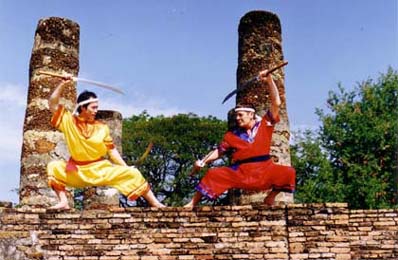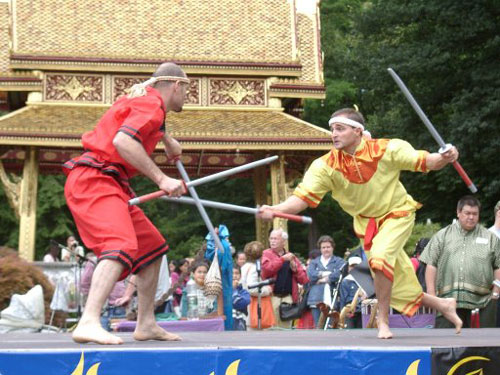Krabi Krabong
Human beings were born with an instinct to fight for survival, especially self-defence against the most serious danger, that is, “the danger of war”. Each human race created methods of self-defence both with and without weapons, varing according to geographical and racial characteristics, until they became their national art of self-defence and a part of their culture. In Thailand, the Thai art of self-defence with bare hands is “Muay Thai” and one of those with weapons is, e.g., Krabi-Krabong. Both of the arts of fighting have kept Thailand an independent country up until the present day.
Knowledge of Krabi-Krabong includes the equipment used in fighting, the skill of dancing, the fight itself and personal skills and talents. The following are the details:


Equipment
Krabi-Krabong is the art of fighting with various kinds of weapons; both short and long, e.g. sword, long knife, long wooden staff, a glaive with curved blade, lance, short staff, and protective equipment, e.g. shields of various shapes. Each weapon can be used differently, as follows:
1. Krabi (long knife): a weapon for slashing and stabbing, made of good quality iron, flat with a pointed tip, to be used for fighting on level ground.
2. Daab (sword): a weapon for slashing and stabbing, made of good quality iron, flat with a curved tip, heavier than Krabi, to be used for fighting on level ground.
3. Ngaaw (glaive): a long weapon for slashing and stabbing, the Ngaaw itself is made of good quality iron, flat with a curved tip similar to that of the daab but shorter in length, with a long wooden handle, to be used for fighting at a distance from an elephant's back
4. Plawng (long staff): also called “Si Sawk” (lit., “two yards”) is a long weapon for striking.
